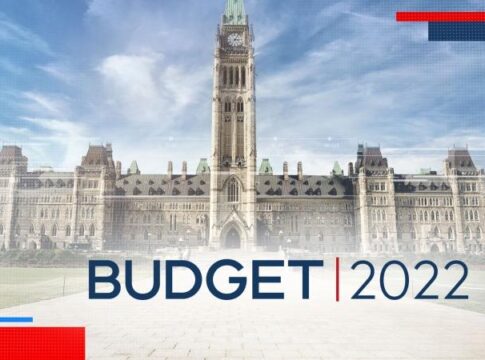The Race Among 6 Major Airlines to Net-Zero Carbon Footprint
The International Air Transport Association (IATA) aims to bring the entire airlines carbon footprint to net-zero by 2050.
The IATA thinks that the present airline emissions targets are not ambitious enough. Willie Walsh, IATA’s Director-General, said that achieving net-zero in the aviation industry calls for a bold commitment. This and the fact that the industry has to bear the $2 trillion cost to transition from fossil fuels.
While other industries are making progress in cutting carbon, development is slower for the airlines.
Still, the race to net-zero is a challenge that US airlines are willing to take on. These include the following six major airlines that have committed.
Alaska Airlines,
American Airlines,
Delta,
JetBlue,
Southwest, and
United Airlines
Some airlines are more ambitious than others when it comes to setting their carbon footprint targets. Yet, all major carriers are in a position to race and win the war on achieving net-zero.
Even so, winning means going beyond having carbon emissions commitments. There are several other factors at play here, affecting each airline’s path to net-zero.
US Airlines and Their Net-Zero Carbon Footprint Plans
Let’s first look at the airlines key financial and performance data and break it down.
Alaska Airlines: Creating lift through sustainability
Alaska Airlines is the 6th biggest airline in the U.S. when measured in fleet size, passengers carried, and the number of destinations served. For 2021 here are some key financial metrics of Alaska:
Market cap = $6.55 Billion
Revenue = $5.49 Billion
Earnings = $0.74 Billion
Alaska earned a positive net income (earnings before interest and taxes) for 2021. Its revenue for the same year represents an 82% change from the prior year.
In its latest ESG report (2020), Alaska managed to handle 37,113 million available seat miles (ASM). The airline is also at par with others in its quest for slashing carbon emissions.
“Caring for the planet led us to set bolder goals for carbon emissions reductions and seek to change the market for sustainable fuels”, it said.
Alaska’s carbon emissions in 2020 (8.3 million tonnes CO2e) were about half of their emissions in 2019 (16 million tonnes CO2e).
In fact, Alaska Airlines is 1 of 2 carriers among the 6 airlines that have an ambitious carbon footprint plan. It aims to decarbonize in 2040 through its five-part strategy, not 2050 as the industry’s goal.
The five-part strategy includes fleet renewal, operational efficiency, novel propulsion, sustainable aviation fuel (SAF), and carbon offsetting technology.
Alaska Airlines 2020 ESG Report
American Airlines: Science-based approach to carbon footprint
If weighed upon all metrics data available, American Airlines is the largest carrier. It is offering an average of about 6,700 flights daily to 350 destinations in 50 countries. It achieved the following financial performance for 2021.
Market cap = $11.63 Billion
Revenue = $27.37 Billion
Earnings = -$0.75 Billion
American Airlines was able to gain a huge change of (79%) in its revenue from 2020 ($15.28B) to 2021 ($27.37 B). But for certain reasons, it lost money in 2021.
Despite that, the airline achieved a very high available seat mile performance of 119,567 million in 2020. This achievement was at the expense of emitting 29.8 million tonnes of CO2e.
The airline tracks its emissions intensity using revenue ton-mile (RTM) measurement. It shows the amount of CO2 produced per revenue ton-mile flown.
How does American Airlines deal with its race toward carbon goals?
It does so by having a clear path to net-zero with an immediate, science-based GHG emissions reduction goal. This target is then subject to the Science-Based Target Initiative’s (SBTi) review to confirm its consistency with climate science.
Unlike Alaska, American Airlines’ carbon footprint plan is to be net-zero in 2050 by focusing on 6 key levers. These also include flight operations and efficiency, fleet renewal, and air traffic control modernization.
Other levers are SAF, next-generation aircraft, and carbon offsets.
American Airlines 2020 ESG Report
Delta Air Lines: Its ambitious path forward
Delta is one of the world’s oldest airlines in operation. It is also a legacy carrier or a network airline that has been around since the dawn of commercial aviation.
Market cap = $25.01 Billion
Revenue = $23.55 Billion
Earnings = $1.67 Billion
The airline was able to achieve positive financial performance despite financial hardships. So far, it’s the first airline that earned over one billion in net income and a 74% increase (up from $13.49B) in revenue in 2021.
This could be because Delta attained an impressive 134,339 million available seat miles stated in its 2020 ESG. It is the highest ASM for all the six major airlines in comparison.
Interestingly, Delta is not that ambitious in cutting down its carbon footprint. It aims for a 50% reduction in emissions by 2050 compared to 2005 industry levels.
Other airlines promise to reduce carbon emissions to net-zero either by 2040 or 2050. Delta’s climate goal is this:
“Achieve carbon-neutrality across our global airline operations from March 1, 2020, forward.”
Delta targets going full carbon neutral by 2030 with a $1 billion pledge to achieve its climate goal. In particular, it seeks big carbon reductions through accelerated fleet retirements and SAF.
Delta is also using various carbon offset types to reduce emissions. This includes investing in renewable energy projects, carbon avoidance offsets, and carbon removals.
It has already bought $1.7 million in carbon offsets and plans to reduce its emissions by 16% from 2005 levels.
JetBlue Airways: Innovations for massive carbon footprint reductions
JetBlue Airways is a major American low-cost airline by structure and operation. Financially speaking, the carrier ranks last with the following financial metrics.
Market cap = $4.52 Billion
Revenue = $5.61 Billion
Earnings = -$0.07 Billion
JetBlue managed to earn higher revenue in 2021 (105% more) compared to 2020 ($2.73 billion). But it gained a loss in 2021.
In connection, the airline handled only 32,689 million ASM as reflected in its 2020 ESG report. It is the least operation performance among the major airline companies.
But those metrics did not dissuade JetBlue to join other airlines in their race to carbon neutrality and net-zero.
In fact, the carrier showed remarkable progress in its carbon emissions reduction efforts.
Its ESG report indicated a 50% decrease in total CO2 emissions, from 10.5 million Mt CO2e in 2019 to only 4.9 million Mt in 2020.
JetBlue pledged to reach a net-zero carbon footprint by 2040, which is the same as Alaska Airlines. The airline will achieve it by focusing on six key levers similar to other airlines.
JetBlue will focus on aircraft efficiency, fuel optimization, SAF, and electronic ground ops. Plus, it will also pursue massive carbon offsetting and technology partnerships.
JetBlue Airways 2020 ESG Report
Southwest Airlines: “Reduce, Replace, and Offset”
Southwest is another major low-cost US airline. As a low-cost carrier, it has a lower operating cost structure than its rivals. Yet, it was able to gain the highest earnings for 2021, amounting to 1.75 billion.
Market cap = $25.35 Billion
Revenue = $14.25 Billion
Earnings = $1.75 Billion
The airline also has the biggest market capitalization among the six major carriers.
When it comes to its production performance, Southwest reported handling 103,456 million available seat miles in 2020. Behind that achievement is the company’s modest emissions.
Southwest’s carbon emissions reduction in 2020 is significant same as the rest of the other airlines. It lowered its carbon footprint by almost 40% from 20.6 million Mt CO2e in 2019 to 12.6 million Mt CO2e in 2020.
Southwest plans to be net-zero in 2050 through its “Reduce, Replace, and Offset” campaign. This climate strategy is like the rest of the airlines as it also focuses on fleet modernization, route optimization, SAF, and carbon offsetting measures.
United Airlines: Going 100% Green
United Airlines tops the list by the number of destinations served. It manages to reach over 1,000 destinations in 170 countries across the globe.
In financial aspects, however, the airline comes third in revenue and market cap. It also has the biggest profit loss for 2021 as indicated in the figures below.
Market cap = $14.17 Billion
Revenue = $22.54 Billion
Earnings = -$0.98 Billion
Interestingly though, United was capable of delivering 122,804 million available seat miles in 2020. It is an impressive operational achievement, which may be due to a lot of destinations served.
Another notable thing about United Airlines is its plan to reach its carbon goals. It is the only airline in comparison that decided not to use carbon offsets as a means to net-zero.
Instead, it will be 100% green in 2050 by focusing on carbon capture and sequestration efforts.
United also aims to tackle emissions at their sources by investing in SAF and direct air capture (DAC). Finally, it will continue improving its operational efficiency and aircraft modernization.
As the airlines’ CEO puts it:
“And we’ll get there (to net-zero) not with flashy, empty gestures, but by taking the harder, better path of actually reducing emissions from flying”.
So, Which Airline Wins the Race to Zero?
The quest of the major airlines to achieve a net-zero carbon footprint reflects the industry’s climate goals. But each airline has its own emissions reduction target to achieve by using varied means.
So, which among the major carriers would be the winner?
Will it be Alaska Airlines or JetBlue Airways that set their net-zero target the earliest in 2040? Or it might be United Airlines that is bold enough to refuse to use carbon offsets.
It seems hard to tell by now. But investors can take a closer look at the companies’ financial and operational performance. Or better yet, they can use the airlines’ carbon emissions reduction plan for guidance.
More information on the airlines emissions plan to achieve a net-zero carbon footprint is available here.
The post The Race Among 6 Major Airlines to Net-Zero Carbon Footprint appeared first on Carbon Credits.



